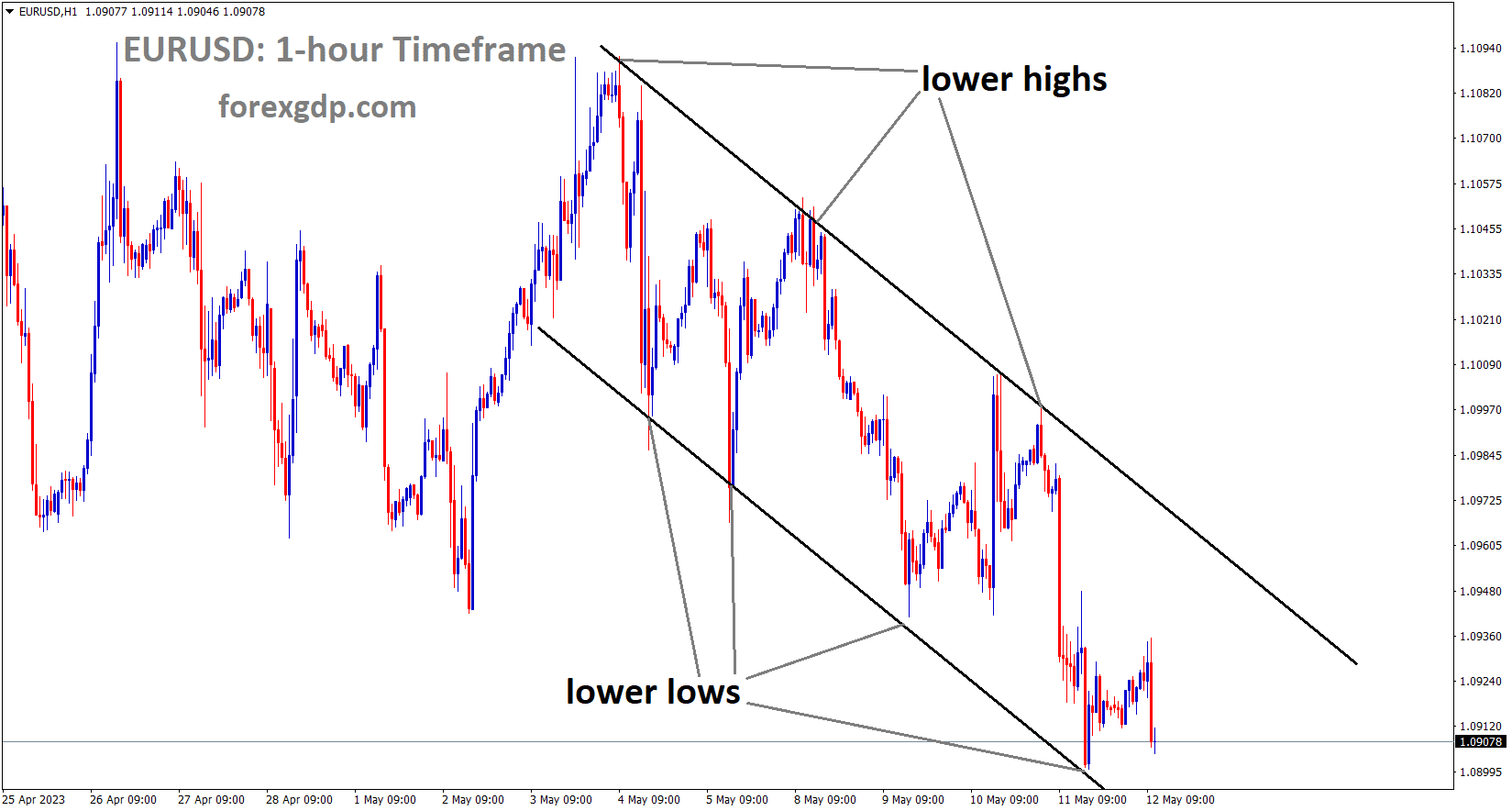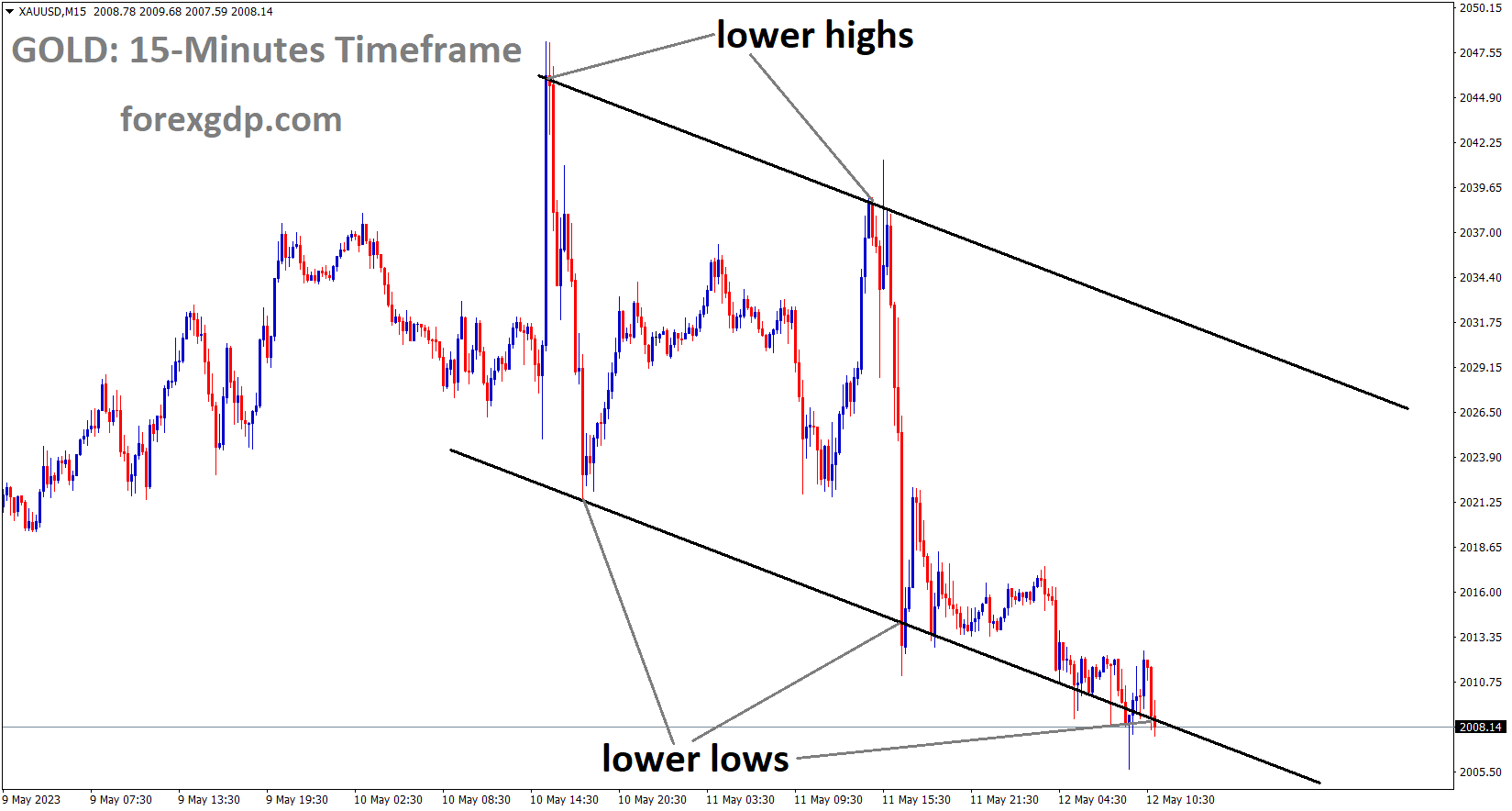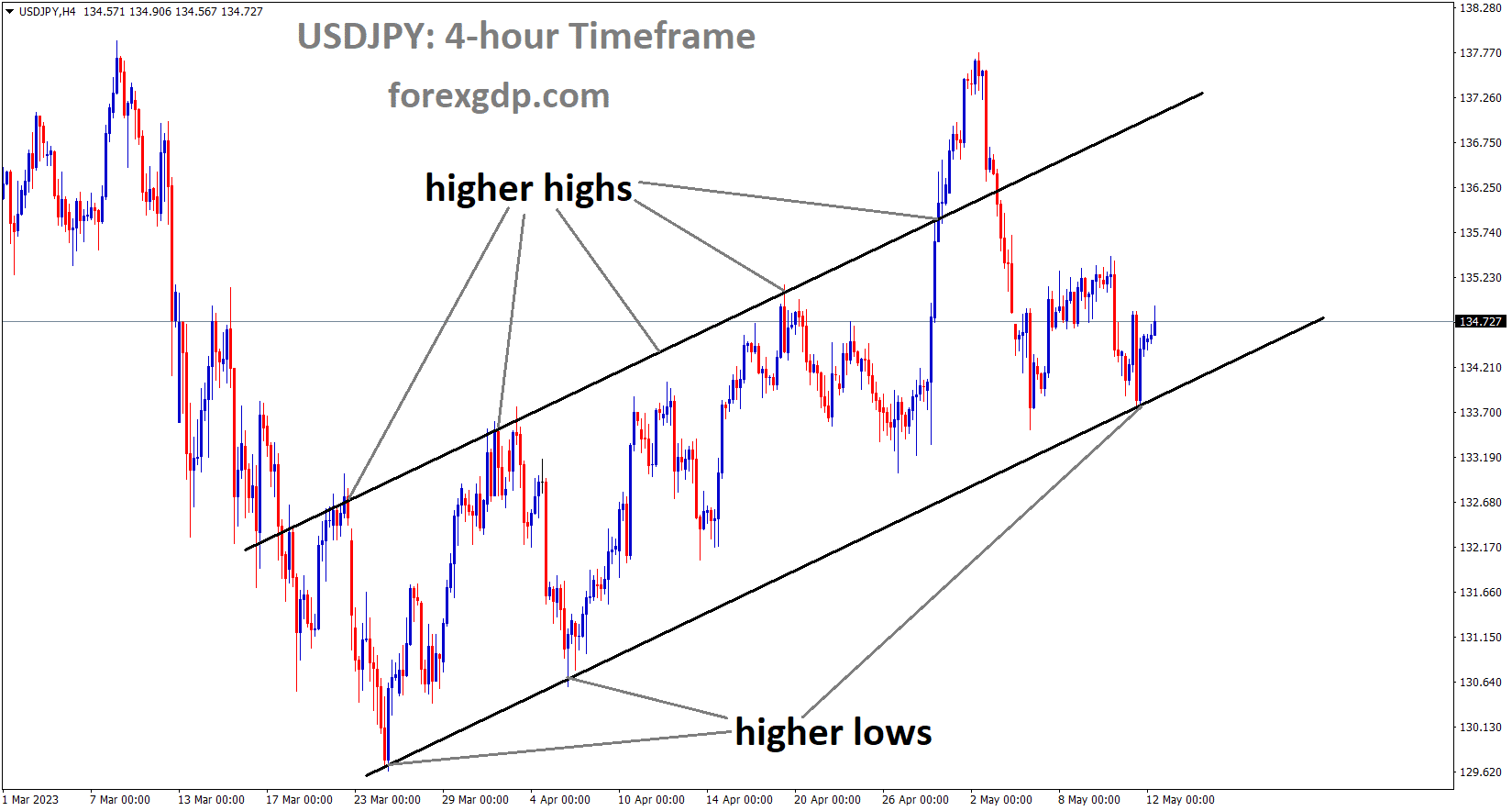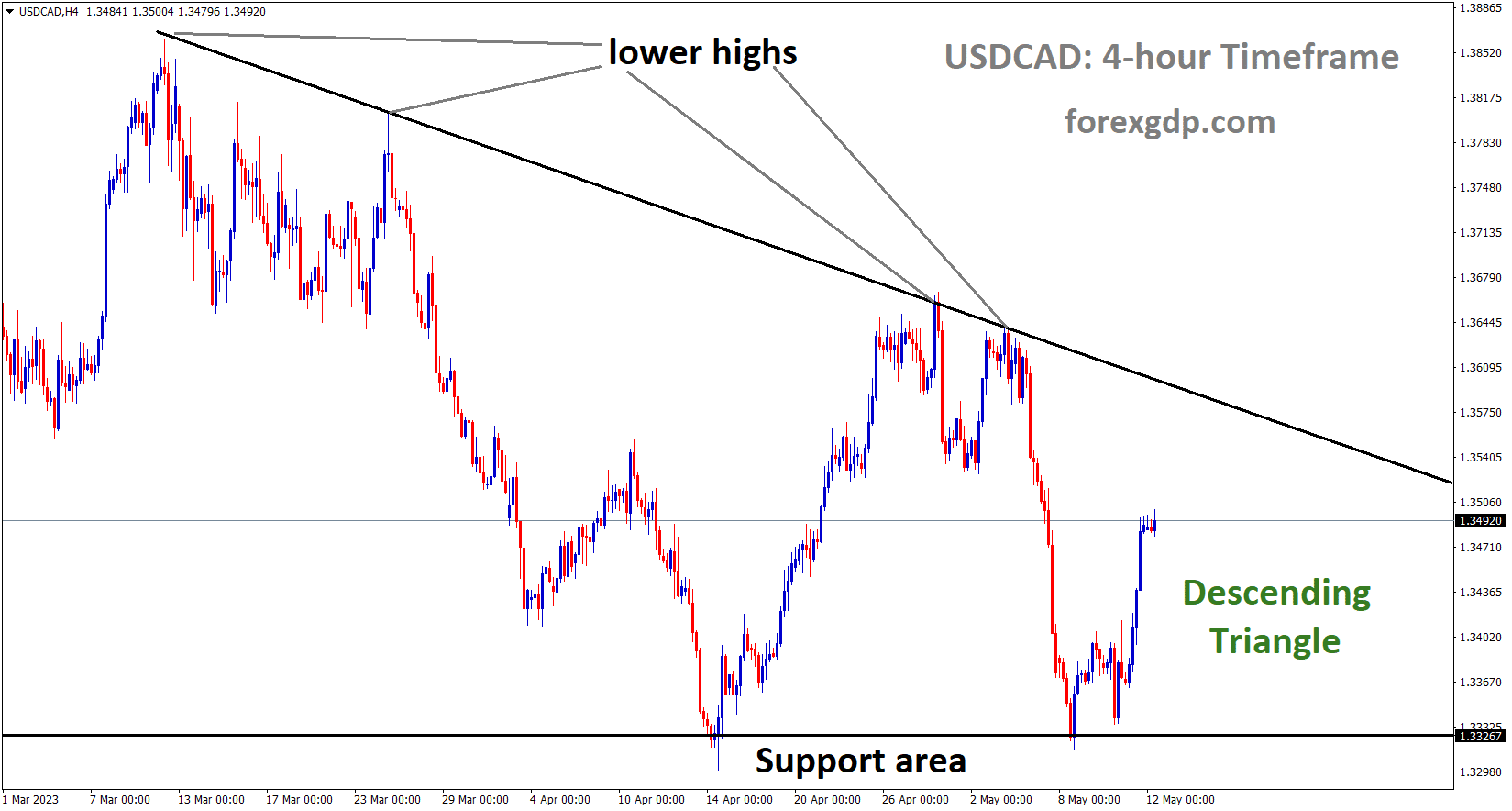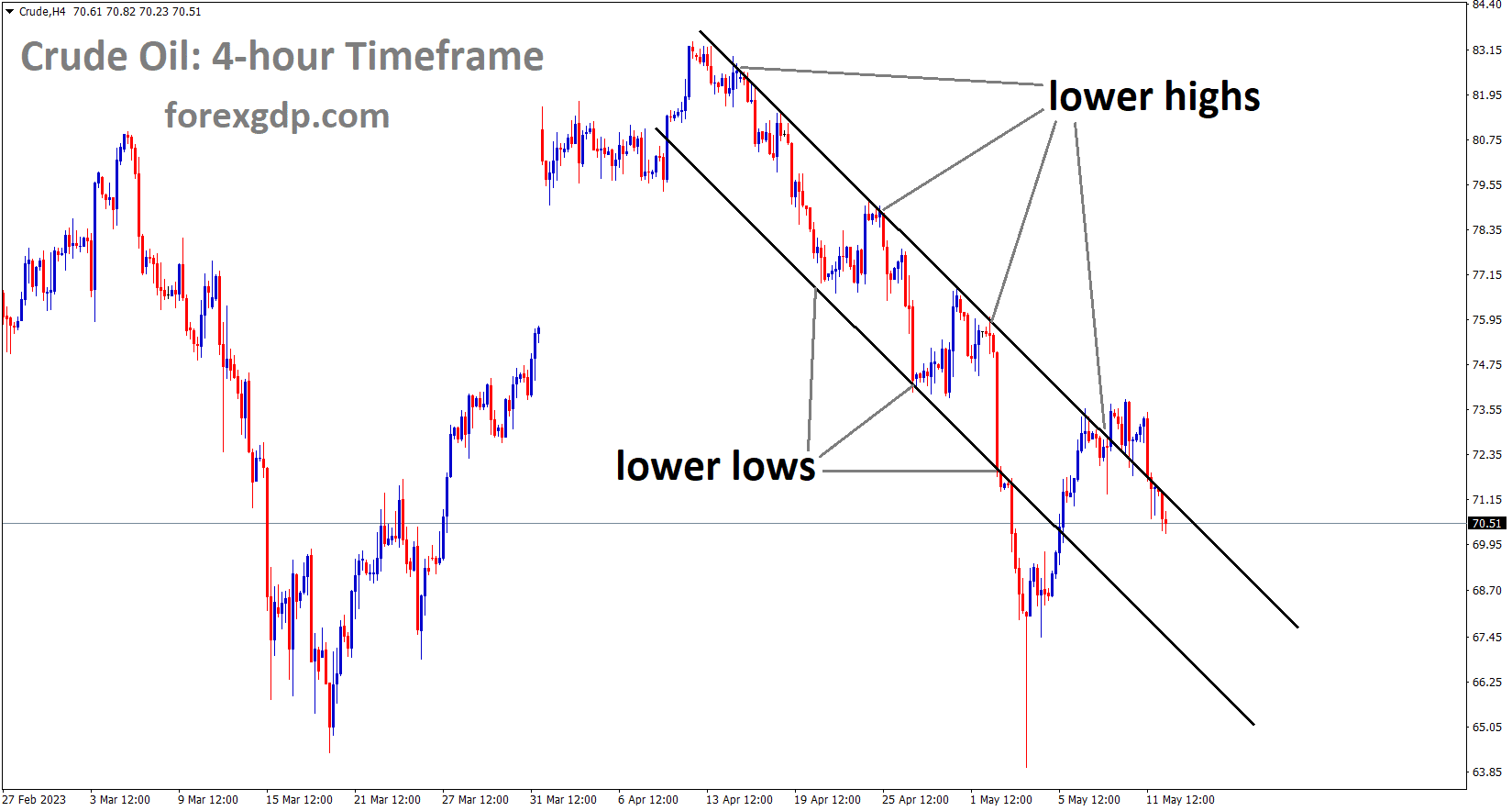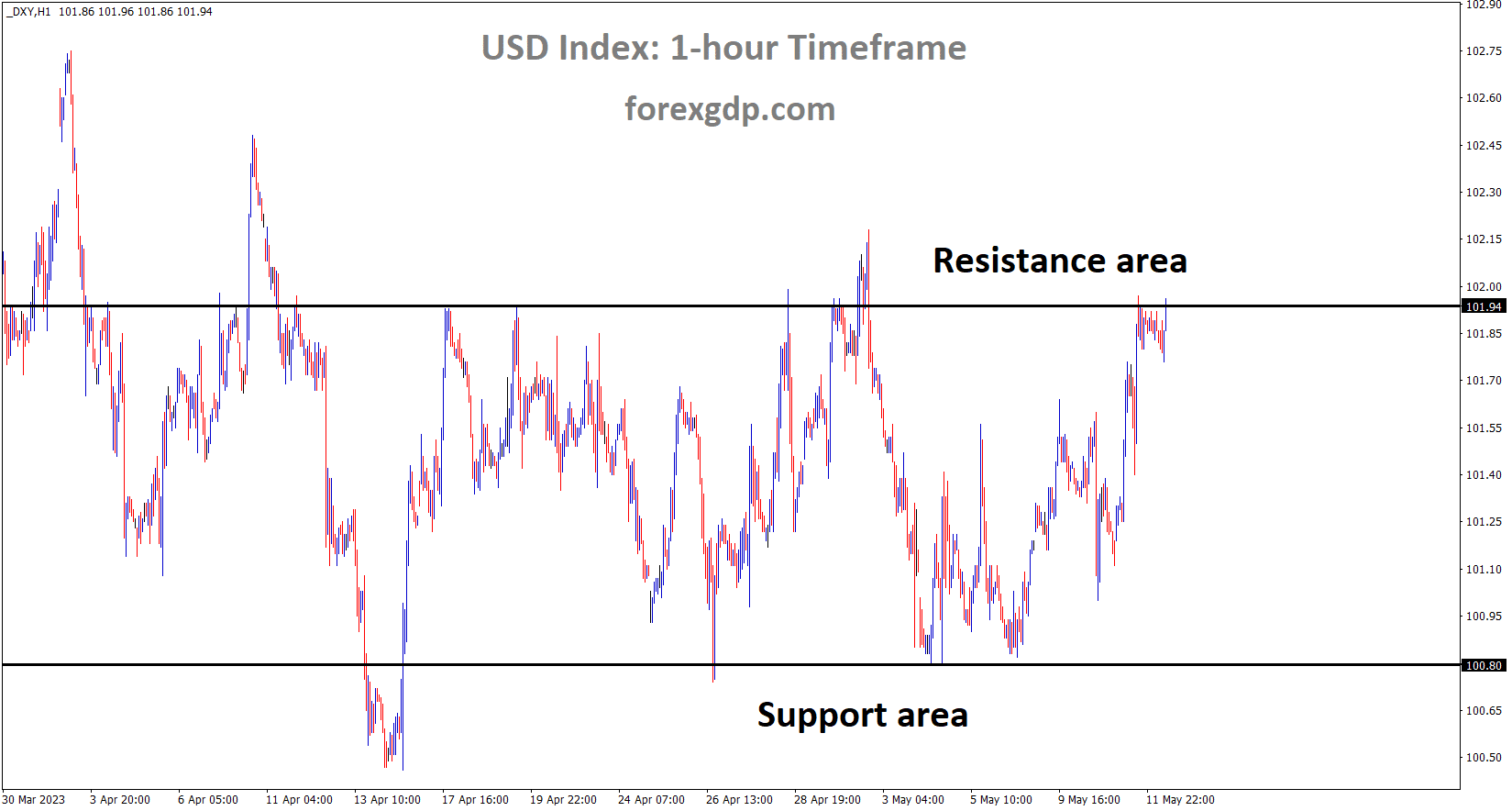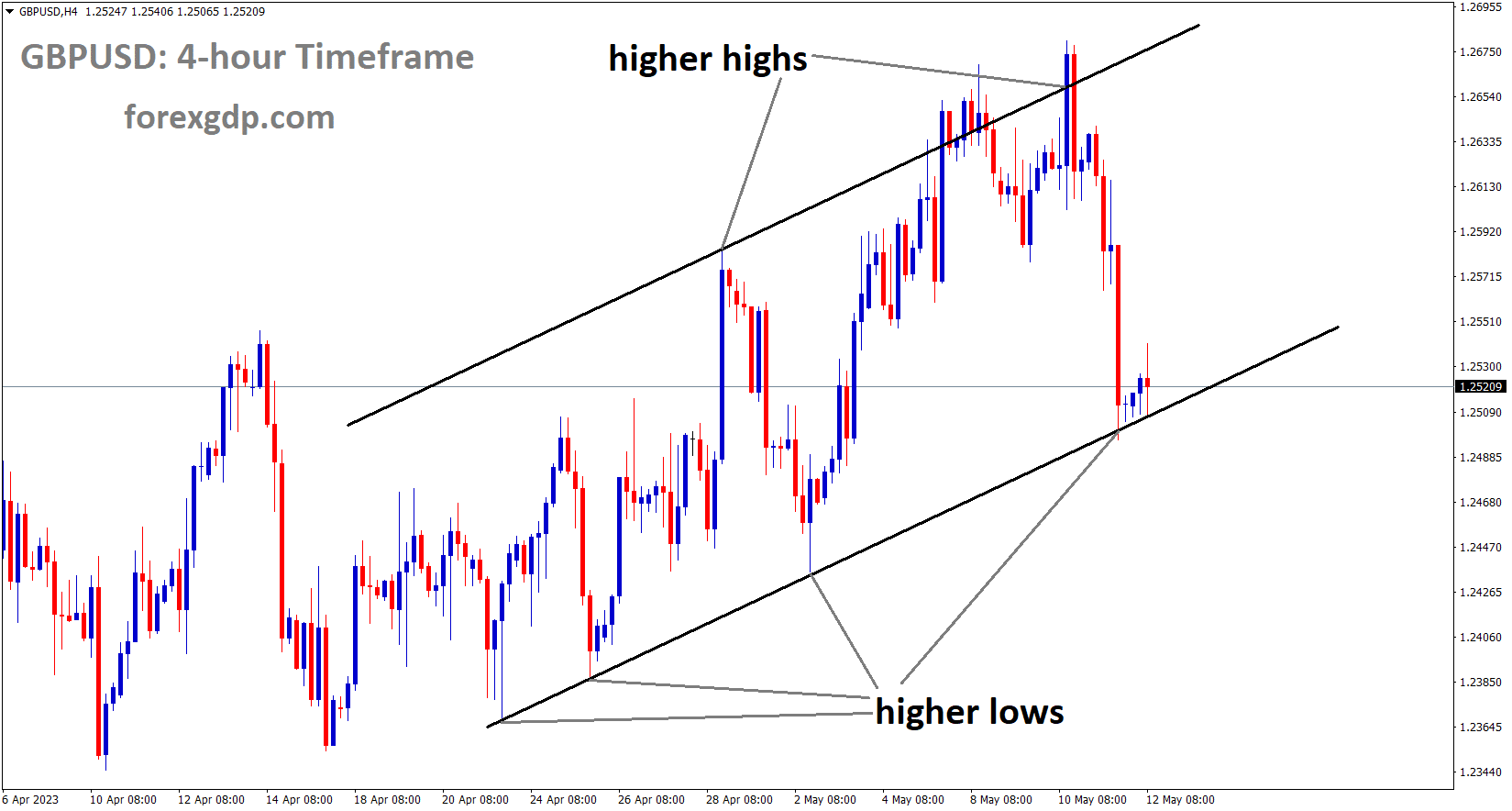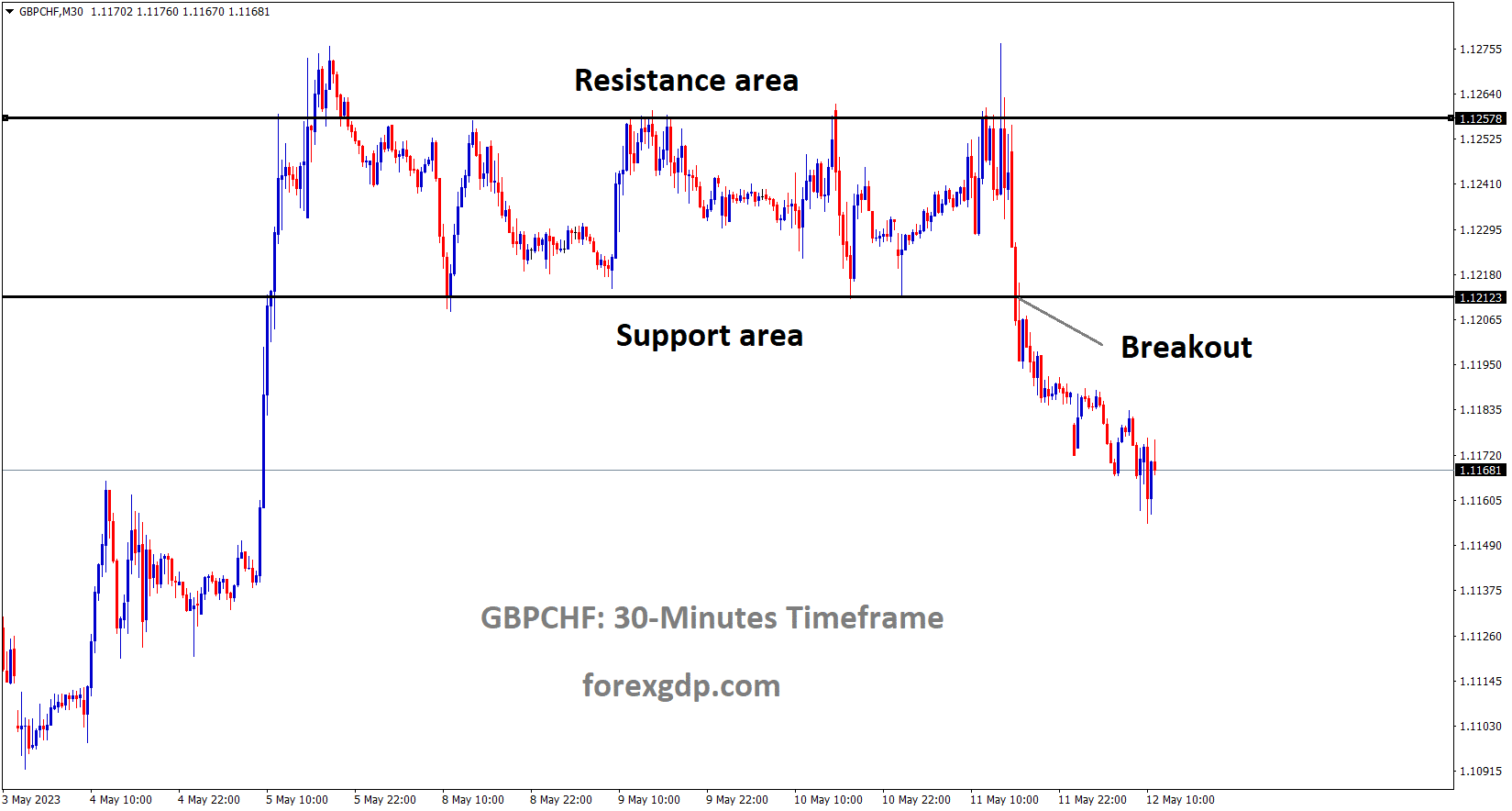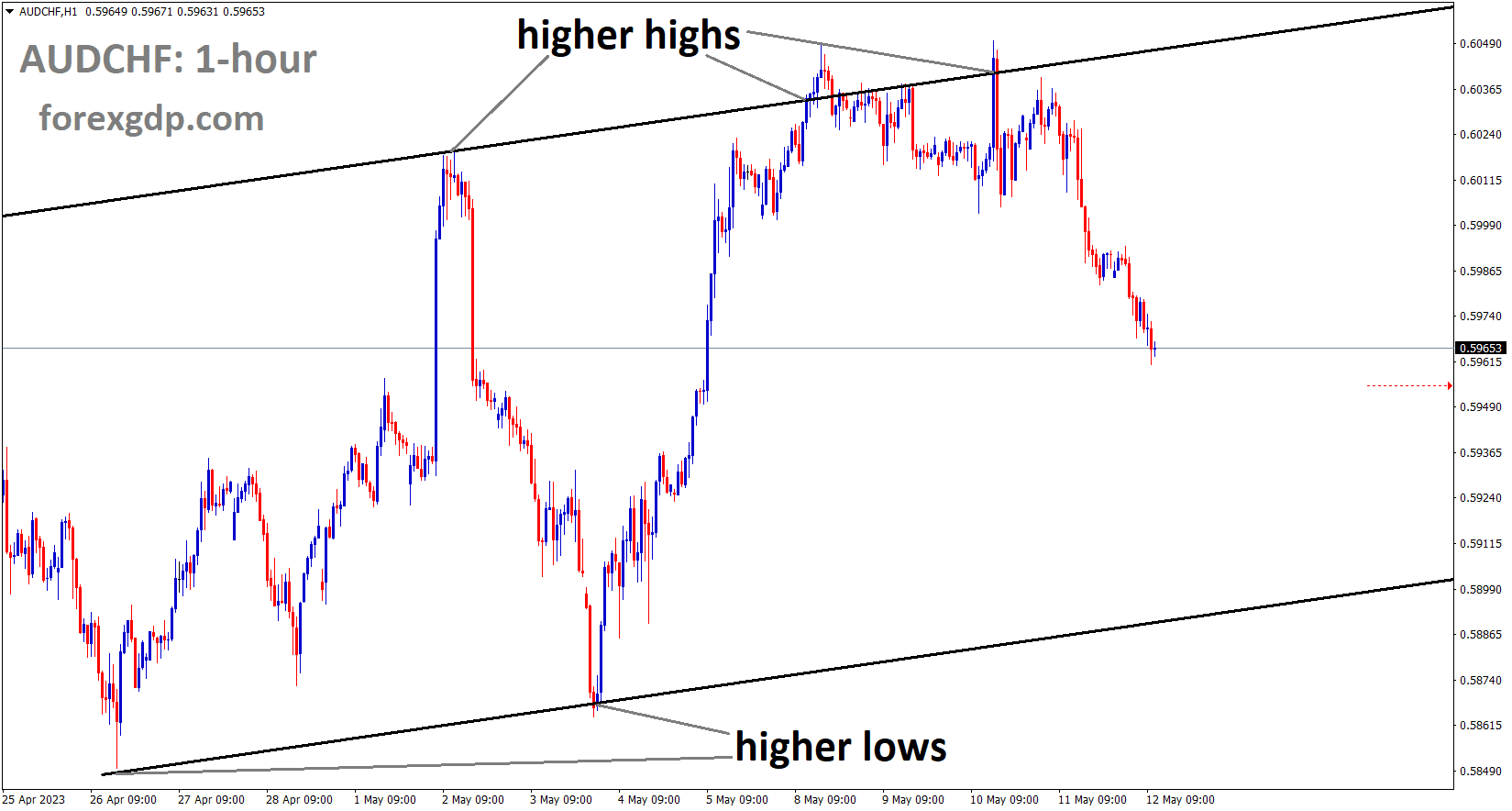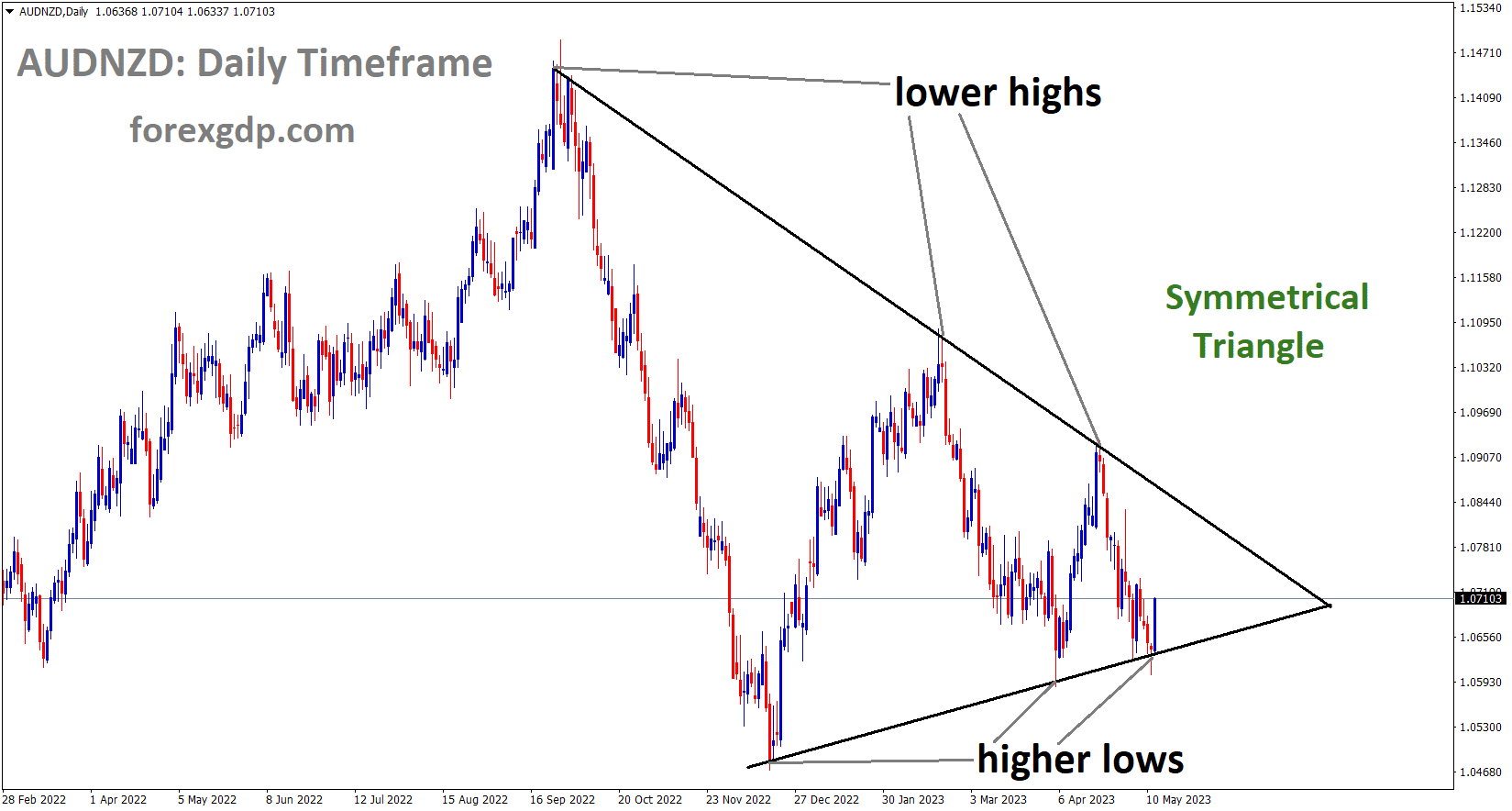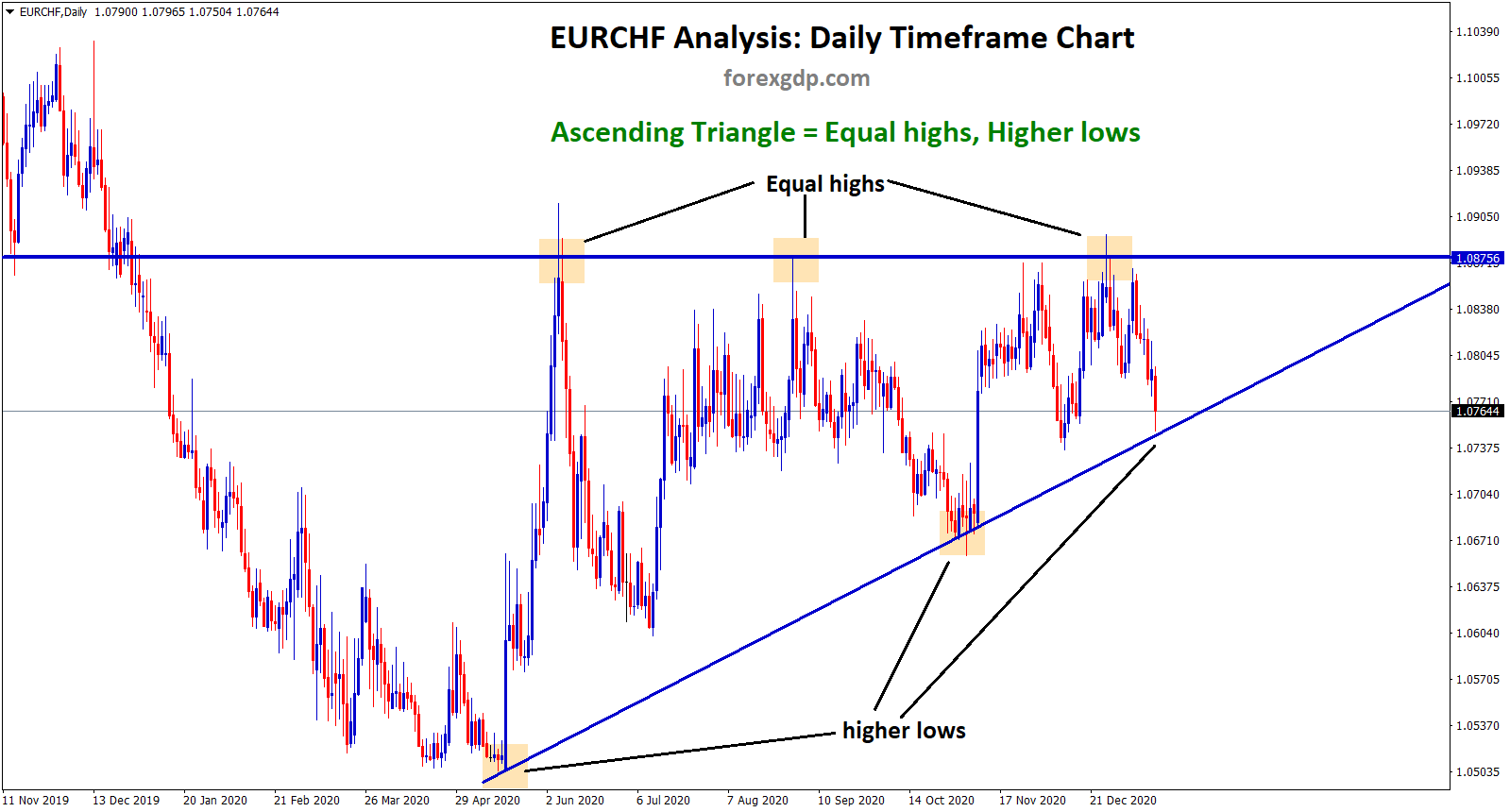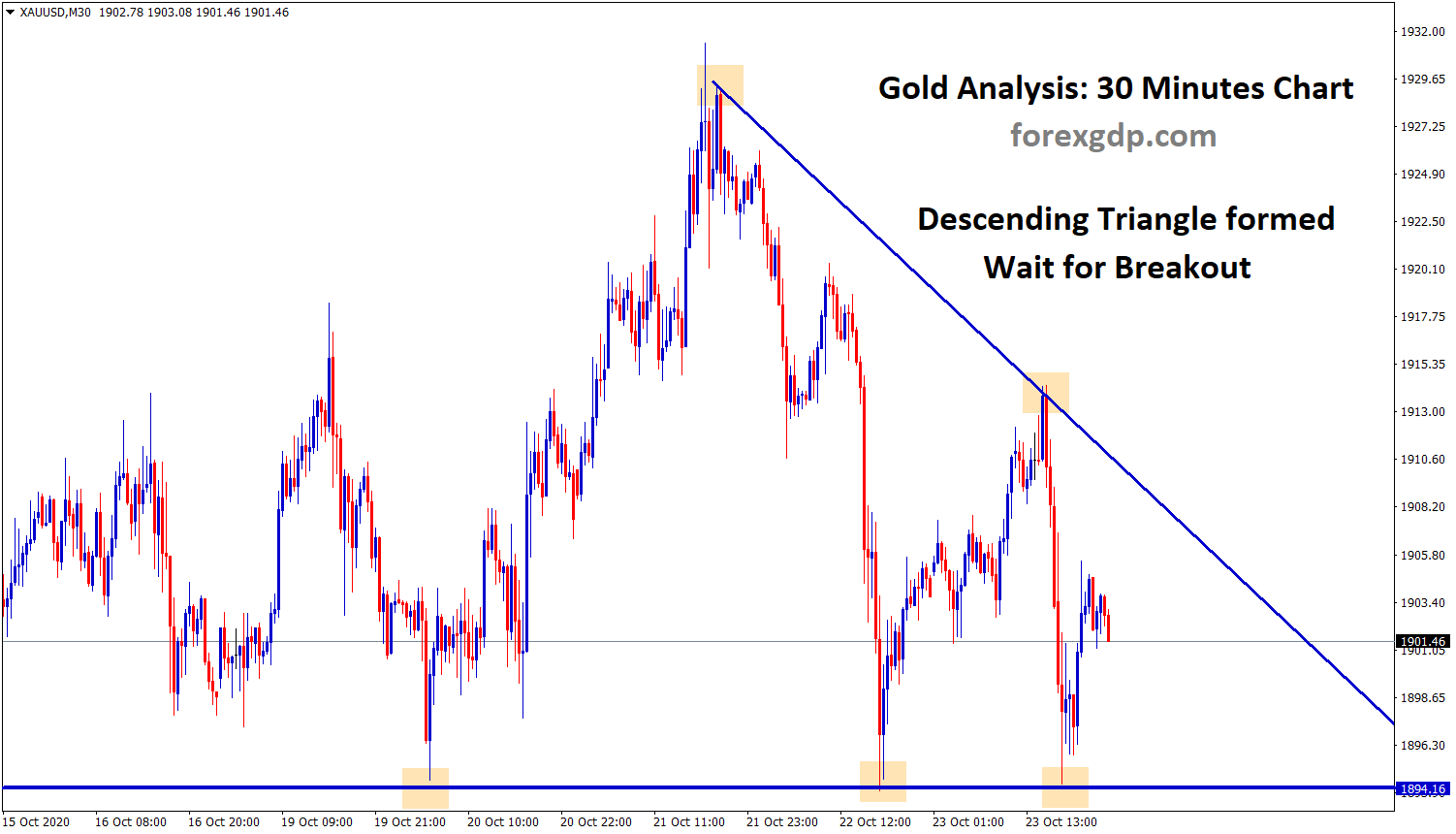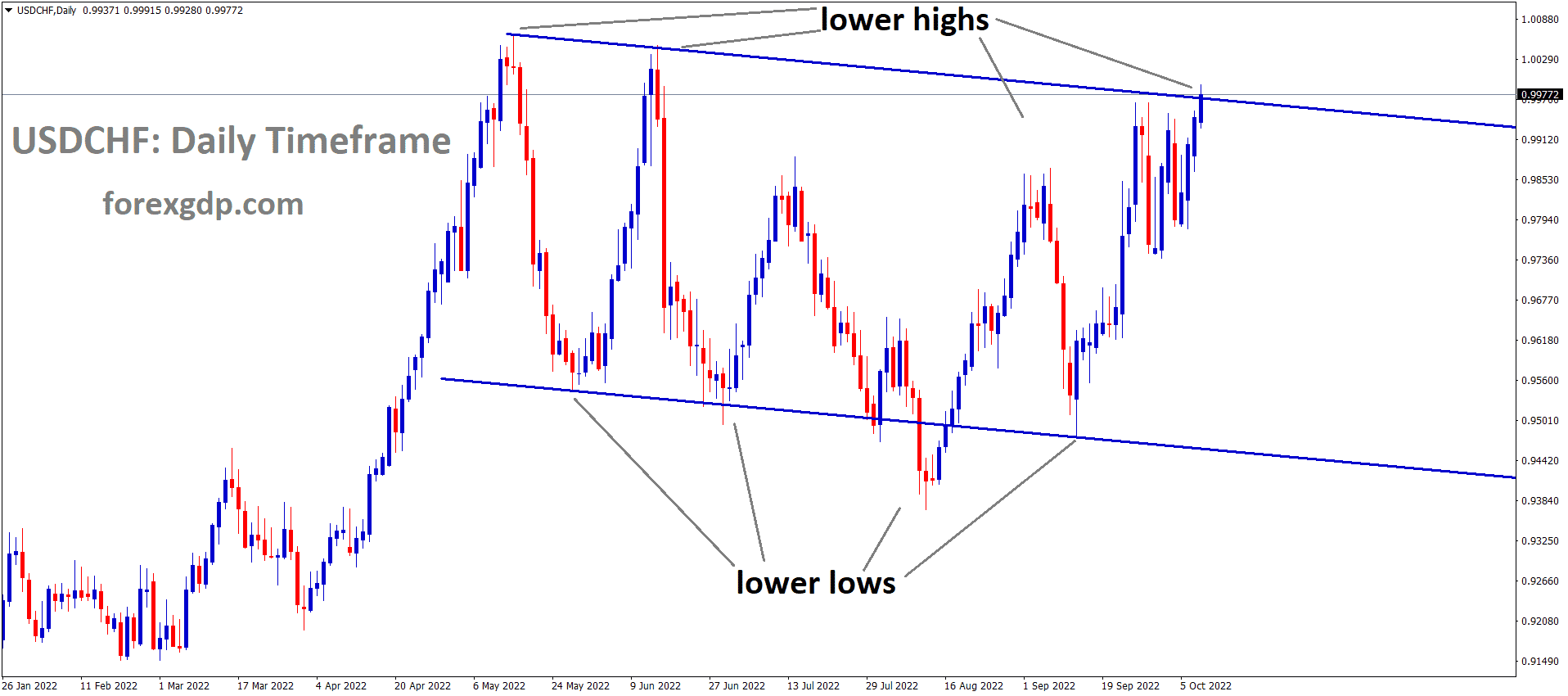EURUSD Analysis
EURUSD is moving in the Descending channel and the market has reached the lower low area of the channel.
Following the ECB’s rate hikes, members of the Central Bank’s council and governing body perceive a cooling in inflation. Members of Europe firmly believe that the continent’s economy can function without experiencing extreme inflation. Further rate hikes in the meeting are more likely if inflation declines month over month, which increases confidence in the ECB’s policymakers as a result of easing inflation in Germany and the Eurozone.
In the early hours of Friday in Europe, the EURUSD declines from an intraday high of 1.0925 but remains sluggish as traders lick their wounds before posting the biggest weekly loss in three months. But despite this, the US Dollar’s recent recovery, a lack of hawkish signals from the European Central Bank, worries about the US debt ceiling, and other factors keep the Euro bears’ optimism at its lowest point in a month. Many ECB officials, including President Christine Lagarde, attempted to defend the institution’s hawkish slant as some on the staff believe that the recent easing in German and European statistics may be a sign that the policy shift is about to occur. In light of this, Bloomberg cites people familiar with the discussion as saying that ECB officials are beginning to accept the possibility that interest rate increases will need to continue in September in order to fully control inflation. Joachim Nagel, the head of the Bundesbank and an ECB policymaker, reaffirmed on Thursday that the ECB should follow a meeting-by-meeting strategy. The policymaker also said that although they are approaching restrictive territory, they are still not there. On the other hand, while addressing the Marquette CEO Town Hall in Michigan on Thursday, Minneapolis Fed President Neel Kashkari noted that inflation has eased but cautioned it is above the Fed’s 2% target.
Though the US Dollar appears to be bracing for its first weekly gain in three weeks, the US Treasury bond yields have fallen for three weeks in a row due to the recent escalating market fears surrounding the US debt ceiling expiry and banking fallouts. It should be noted that the main negative developments to weigh on the sentiment appear to be the postponement of the debt ceiling negotiations between US President Joe Biden and House Speaker McCarthy and a decline in the share price of PacWest Bancorp. The risk profile is also threatened by Janet Yellen, the US Treasury Secretary, and Beth Hammack, Chair of the Treasury Borrowing Advisory Committee and Co-Head of Goldman’s Global Financing Group, who have both expressed concern about a US default. The US Dollar buyers, on the other hand, have recently been stimulated by the market’s consolidation amid a light calendar and cautious mood ahead of today’s preliminary readings of the University of Michigan’s (UoM) Consumer Sentiment Index for May and the UoM 5-year Consumer Inflation Expectations for the same month. The EURUSD may experience further upside should the scheduled inflation cues and central bank comments succeed in persuading markets of the ECB’s relatively more hawkish policy bias than the Fed. The key to keeping an eye out for clear directions will still be the aforementioned risk catalysts.
GOLD Analysis
XAUUSD Gold price is moving in the Descending channel and the market has reached the lower low area of the channel.
Following the release of US PPI data that was below expectations, gold prices declined. Fears of a US recession and a drop in inflation caused gold prices to fall as demand decreased. However, as long as the US Debt Ceiling story is in the news, gold prices will continue to rise. Today’s debate over the debt ceiling resumed with remarks from the US president and Republican lawmakers; depending on the outcome, gold prices will change.
A round of US economic data revealed that inflation in the US (US) is somewhat slowing while the labour market cools down, as unemployment claims exceeded expectations. The gold price struggles to break through resistance around $2040 and plummets as a result. However, as evidenced by the gold price posting consecutive days of losses, the data were in favour of the US Dollar (USD). Trading at $2020.15, the XAU/USD is down by 0.47%.In spite of the US Federal Reserve’s (Fed) ongoing cycle of tightening, the US economy is getting worse. Throughout the day, the US Department of Labour released significant information that might provide hints about the Fed’s decision for the upcoming meeting in June. The Producer Price Index (PPI)’s so-called wholesale prices increased by 2.3% YoYm, less than the 2.4% consensus estimate, while the core PPI, which excludes volatile items, continued to increase at a faster rate than the headline figures. The figures were 3.2% less than the analysts’ predicted 3.3%. Initial Jobless Claims increased above forecasts of 245K and reached 264K in the week ending on May 6, according to additional data released by the same US government agency. In contrast to expectations of 1..820M, continuing claims, which do not include those who have been receiving benefits for a week or more, increased to 1.813M.
The XAUUSD dropped from around $2040 to its daily low of $2010.80 following the release of the data. However, buyers drove up spot gold prices to the level they are at now. President of the Minnesota Fed Neil Kashkari balanced the scales by stating that inflation is decreasing in light of the fact that the data supports the Federal Reserve’s dovish position. But it persists, adding, We will have to keep at it for a while, highlighting his lean towards the hawkish end of the spectrum. In addition, the narrative surrounding the US debt ceiling continues to influence investor sentiment, with mixed trading in US stocks. Following little to no progress on May 9, US President Joe Biden will meet with US Congress leaders on Friday. Without the support of the US Congress, according to US Treasury Secretary Janet Yellen, it is unlikely that the Biden administration could prevent a government default.
USDJPY Analysis
USDJPY is moving in an Ascending channel and the market has rebounded from the higher low area of the channel.
The JPY has had the worst year of any G-10 currency, according to HSBC economists. With Japan’s inflation at 3.8%, which is the highest level in 41 years, the FED and Bank of Japan’s policy meetings have become more divergent. The Bank of Japan will soon abandon its loose monetary policy and tighten its hold this year. If policy changes occurred in BoJ, the JPY will then recover in the second half of 2023.
In April, the JPY underperformed the other G10 currencies due to widening rate differences between the US and Japan. The safe haven status of the JPY and other local factors, according to HSBC economists, support future JPY strength. We believe the JPY can recover, not the least of which is that the BoJ’s ongoing policy review would not preclude a change to its yield curve control policy, even if it were to occur a little later than anticipated. Furthermore, Japan’s underlying inflation accelerated to a 41-year high of 3.8% in March when energy was excluded, while the country’s core inflation rate remained stable in March. To claim that Japan now has a “inflation problem” may still be stretching the truth, but it should be acknowledged that some deflation-era policies might no longer be appropriate.
In addition to other regional factors like an improvement in the current account, the future divergence in monetary policy between the Fed and the BoJ should support our case for JPY appreciation later in the year. In addition, we believe that any US-centric risk off dynamics, such as the US debt ceiling standoff and US banking sector worries, will make the JPY appear to be a safer safe haven than the USD.
USDCAD Analysis
USDCAD is moving in the Descending triangle pattern and the market has rebounded from the horizontal support area of the pattern.
Oil prices have fallen to new lows this week due to disappointing CPI data from China and the US economy being stressed by banking defaults. Canadian Dollar significantly impacted by global banks’ continued tightening of inflation control measures.
Following tight liquidity pressures in businesses, oil demand has decreased.
Bulls of the USDCAD pause around 1.3490 in the early hours of Friday after the previous day’s biggest daily increase in nine weeks. As a result, the Loonie pair fails to celebrate the US Dollar’s decline because the outlook for oil prices is still negative. The cautious attitude in advance of US inflation clues, as well as challenges to sentiment brought on by US debt ceiling talks and banking fallouts, also keep buyers optimistic. As economic worries and a stronger US dollar continue to put pressure on commodity prices, WTI crude oil is trading near its weekly low of $70.60 as of the time of this writing. However, recently disappointing inflation data from China, the world’s largest consumer of commodities, combine with impending worries about a US default and banking repercussions to put downward pressure on the price of black gold.On the other hand, despite mostly negative readings for the US Producer Price Index (PPI) and Initial Jobless Claims the day before, the US Dollar Index retreats from a one-week high to 102.00. It should be noted that the hawkish remarks made by Minneapolis Fed President Neel Kashkari combined with the postponement of the debt ceiling negotiations between US President Joe Biden and House Speaker McCarthy and a drop in the share price of PacWest Bancorp favoured those who were bullish on the US Dollar.
Crude Oil Analysis
Crude Oil price is moving in the Descending channel and the market has fallen from the lower high area of the channel.
Other factors supporting the market’s most recent corrective bounce include expectations of improving Chinese inflation data, hopes of seeing softer US inflation clues, and a lack of recent disappointment on the US banking and debt-ceiling fronts. The US stock futures show modest gains, reflecting the mood, while the Asia-Pacific equities rise amid dismal US Treasury bond yields. The University of Michigan’s Consumer Sentiment Index (CSI) for May and the UoM 5-year Consumer Inflation Expectations for the same month are preliminary readings that the USD/CAD traders can focus on for potential moves due to a light calendar in Canada.
USD Index Analysis
USD Index is moving in the Box pattern and the market has reached the resistance area of the pattern.
The US PPI inflation rate dropped to 2.3% from 2.7% last month. Core PPI decreased from 3.4% to 3.2%.
Initial unemployment claims that are higher than before raise concerns about declining employment rates. This will cause the FED to be more cautious about rate hikes in future meetings. Following the release of lower-than-expected PPI inflation data, the US dollar is down in the market.
The headline and core US PPI inflation rates both showed a welcome decline. The year-over-year print for April showed a 2.3% increase, below last month’s 2.7% increase and below expectations of 2.5%. Similar to the previous 3.4%, Core PPI came in at 3.2%, below expectations of 3.3%. PPI increased by 0.2% in April on a month-over-month basis compared to a 0.5% decline in March and against forecasts of a 0.3% increase, indicating that while the overall direction of travel is still positive, prices are not showing much desire to decline. Initial jobless claims increased to levels last seen in 2021, but it is difficult to pinpoint the specific reason why the dollar moved slightly lower following the release of the data. A weaker jobs market suggests the Fed may change its stance and think twice about continuing to raise rates in the future, which is typically bad news for the dollar. However, it appears that the Fed is delaying hikes at the current rate in light of new data. This only highlights how important future inflation prints will be.
PPI serves to supplement the consumer price index, which typically elicits a stronger market reaction and is the primary inflation gauge used by the market. Headline inflation came in at 4.9%, adding to the sharp decrease of 1% from last month. This shows a reluctance to go lower in contrast to the headline figure shown below. The Fed expects to maintain high interest rates for a longer period of time if price pressures continue, which will be detrimental to the economy given the ongoing problems with regional banks and the US debt ceiling.
GBPUSD Analysis
GBPUSD is moving in an Ascending channel and the market has reached the higher low area of the channel.
The Bank of England raised interest rates by 25 basis points on Thursday, making it the 12th time in a row that they have done so. The governor of the Bank of England forecast flat first-half growth and modest second-half growth for 2023. To reduce inflation, we must tighten the necessary monetary policy.
The UK Bank Rate was increased by the Bank of England by 25 basis points to 4.5%, marking the 12th straight increase. Swati Dhingra and Silvana Tenreyro were the only MPC members to vote against the rate increase, which passed 7-2. The Bank of England stated that the decision made today was “conditioned on a market-implied path for Bank Rate that peaks at approximately 434% in 2023 Q4 before ending the forecast period at just over 312%.”If price pressures continue to be strong, the BoE stated that additional monetary policy tightening “would be required” and added that they are “continuing to address the risk of more persistent strength in domestic price and wage setting, as represented by the upward skew in the projected distribution for CPI inflation.” The UK central bank stated that they anticipate a sharp decline in CPI beginning in April.
Governor of the BoE Andrew Bailey provided a positive outlook for UK growth. The BoE anticipates that the UK GDP will remain unchanged in the first quarter and grow slowly in the remaining months. The Committee now believes that the path of demand is likely to be materially stronger than expected in the February Report, though still modest by historical standards, because economic activity has been less weak than expected in February.
GBPCHF Analysis
GBPCHF has broken the Box pattern in downside.
The UK economy is doing well, according to UK Finance Minister Jeremy Hunt, but attention should be paid to taxation, labour supply, and productivity.
In this circumstance, we concentrate solely on achieving higher wages and a fast-growing economy.
Good news, the economy is expanding, but we must continue to focus on tax, labour supply, and productivity, UK Finance Minister Jeremy Hunt said following the release of the March Gross Domestic Product data on Friday. Hunt continued, We will not stop working until the job is finished and we have the high wage, high growth economy we need.
AUDCHF Analysis
AUDCHF is moving in an Ascending channel and the market has fallen from the higher high area of the channel.
UBS intends to integrate the Credit Suisse merger while concentrating on a cost-cutting strategy. The two international banks will be merged into one, and executives will not sell the same products through two executives. If UBS fully acquires control of Credit Suisse by the end of June, the Swiss Franc is likely to strengthen.
According to people involved in the planning, UBS Group AG has prioritised integrating the investment bank of Credit Suisse and speeding up cost-cutting. In order to establish clarity on day one and prevent two people from calling institutions to sell the same products, executives will first focus on bringing the two investment banks together.
AUDNZD Analysis
AUDNZD is moving in the Symmetrical triangle pattern and the market has rebounded from the bottom area of the pattern.
According to an RBNZ survey on New Zealand’s monetary situation, inflation will start to decline in the second quarter of 2023.
According to the RBNZ, the two-year inflation forecast has been reduced from 3.30% to 2.79%. Average inflation for NZ in Q1 2023 will drop to 4.28% from the anticipated 5.11%.
New Zealand’s inflation expectations continue to decline over the time horizon in the second quarter of 2023, according to the Reserve Bank of New Zealand’s most recent survey of monetary conditions, which was released on Friday. Expectations for inflation over the next two years, which are thought to be the time period during which RBNZ policy changes will be reflected in prices, fell sharply from 3.30% to 2.79%. Average one-year inflation expectations for NZ in the first quarter of 2023 decreased to 4.28% from 5.11% in the first quarter of this year. The New Zealand Dollar was destroyed by the New Zealand inflation expectations’ ongoing downward trend.
Don’t trade all the time, trade forex only at the confirmed trade setups.
Get Live Free Signals now: forexgdp.com/forex-signals/

